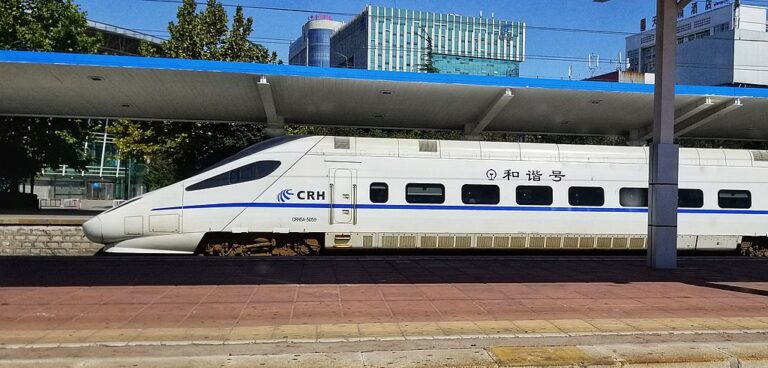Published on April 22, 2024

Written by Jeremy Hsu for NewScientist.
Construction began today on the first true high-speed rail line in the US, which will connect Los Angeles suburbanites to the bright lights of Las Vegas, Nevada. Not only should the project enable people in the US to finally experience European and Asian standards of speedy passenger trains, it could also offer a commercial model for building high-speed rail lines elsewhere in the US.
A groundbreaking ceremony today in Las Vegas, attended by US Secretary of Transportation Pete Buttigieg alongside Nevada and California state officials, marked the official start of construction for the Brightline West project. With a targeted completion in four years – just in time for the 2028 Summer Olympics in Los Angeles – Brightline West is expected to whisk passengers at speeds of up to 320 kilometres per hour down the median of the Interstate 15 highway, bypassing lines of cars stuck in weekend traffic jams.
The $12 billion project may seem like a bold gamble for Brightline and its owner, Fortress Investment Group, even with a $3 billion federal grant announced by President Joe Biden back in December 2023. But there are several reasons why Brightline West may succeed where other US high-speed rail projects have fallen behind.
Brightline is focused on connecting major markets separated by about 400 to 550 kilometres, according to a report by the infrastructure consultancy AECOM. That represents a sweet spot where high-speed rail is very competitive with driving and flying. The 350-kilometre Brightline West trip from Las Vegas to the Los Angeles suburbs is supposed to take just over 2 hours – representing an attractive alternative to the 4-hour drive that 50 million people travelling between the cities make each year.
Another factor in Brightline’s favour is that it leased access from Nevada and California to build Brightline West through the existing Interstate 15 corridor. That bypasses the typical costs and delays involved in obtaining rights of way and acquiring land.
A reduced risk of delay can also keep overall project costs down over time. California’s own high-speed rail project, which was first approved by voters in 2008 to link San Francisco to Los Angeles, has seen estimated project costs skyrocket from $33 billion to $128 billion. Other high-speed rail projects are currently being considered for Texas and the Pacific Northwest.
“Time is not your friend if you’re talking about preparing for or going through with construction [because of] inflation,” says Jan Whittington at the University of Washington in Seattle. “These projects are so large that they are like implementing multiple mega projects that are all dependent on each other for successful completion.”
Continue reading here.
Construction began today on the first true high-speed rail line in the US, which will connect Los Angeles suburbanites to the bright lights of Las Vegas, Nevada. Jan Whittington at the University of Washington is quoted.